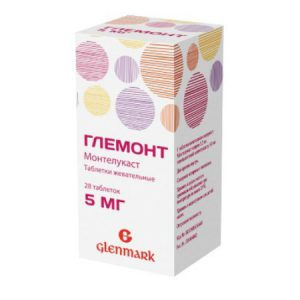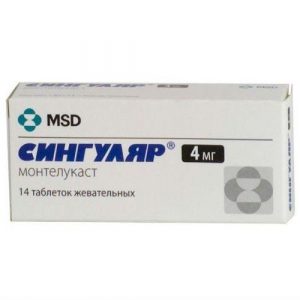Description
Latin name
Simbicort Turbuhaler
Packaging
120-dose vial.
Indications
Bronchial asthma (not adequately controlled with inhaled corticosteroids and short-acting beta 2-adrenostimulators or adequately controlled by long-acting inhaled corticosteroids and beta2-adrenostimulators).
COPD (Symptomatic therapy in patients with severe chronic obstructive pulmonary disease (FEV <50% of the estimated estimated level) and with recurring exacerbations in the anamnesis, which have pronounced symptoms of the disease, despite the treatment with long-acting bronchodilators). Contraindications Hypersensitivity to budesonide, formoterol, or inhaled lactose. Children’s age up to 6 years. Precautions: Pulmonary tuberculosis (active or inactive form) fungal, viral or bacterial infections of the respiratory system, thyrotoxicosis, pheochromocytoma, diabetes mellitus, uncontrolled hypokalemia, idiomatic hypertrophic subaortic stenosis, severe arterial hypertension, aneurysm of any type of cardiovascular disease or other (coronary heart disease, severe tachyarrhythmia or heart failure), lengthening of the QT interval (taking formoterol may cause Q lengthening Tc interval). Pregnancy and lactation There are no clinical data on the use of Symbicort Turbuhaler or the combined use of formoterol and budesonide during pregnancy. During pregnancy, Symbicort Turbuhaler should be used only in cases where the benefits of using the drug outweigh the potential risk to the fetus. The lowest effective dose of budesonide necessary to maintain adequate control of the symptoms of bronchial asthma should be used. It is not known whether formoterol or budesonide passes into breast milk of women. Symbicort Turbuhaler can be prescribed to nursing women only if the expected benefit to the mother is greater than any possible risk to the baby. Composition 1 delivered dose (dose exiting the mouthpiece) contains: Active ingredients: budesonide 160 mcg and formoterol fumarate dihydrate 4.5 mcg. Excipients: lactose monohydrate – 730 mcg. Dosage and administration of Symbicort Turbuhaler is not intended for the initial treatment of intermittent and mild persistent asthma. The selection of the dose of drugs that are part of Symbicort Turbuhaler takes place individually and depending on the severity of the disease. This must be taken into account not only at the beginning of treatment with combined drugs, but also when changing the dose of the drug. In the event that individual patients require a different combination of doses of the active ingredients than in Symbicort Turbuhaler, pV adrenergic agonists and / or glucocorticosteroids in separate inhalers should be prescribed. Bronchial asthma Adults (18 years of age and older): Symbicort Turbuhaler 80 / 4.5 mcg / dose and 160 / 4.5 mcg / dose: 1-2 inhalations twice a day. If necessary, it is possible to increase the dose to 4 inhalations twice a day. After optimal control of symptoms of bronchial asthma is achieved while taking the drug twice a day, it is possible to reduce the dose to the least effective, up to taking it once a day. Adolescents (12-17 years old): Symbicort Turbuhaler 80 / 4.5 mcg / dose and 160 / 4.5 mcg / dose: 1-2 inhalations twice a day. Children over 6 years of age: Symbicort Turbuhaler 80 / 4.5 mcg / dose: 1-2 inhalations twice a day. Patients should be regularly visited by a doctor to monitor the optimal dose of Symbicort Turbuhaler. The dose should be reduced to the lowest, against which optimal control of symptoms of bronchial asthma is maintained. After achieving optimal control of bronchial asthma when taking the drug two times a day, it is recommended to titrate the dose to the minimum effective, up to taking the drug once a day, in cases where, according to the doctor, the patient requires maintenance therapy in combination with a long-acting bronchodilator. COPD Adults: 2 inhalations of Symbicort Turbuhaler 160 / 4.5 mcg / dose twice daily. Special patient groups: there is no need for a special dose selection of the drug for elderly patients. There is no data on the use of Symbicort Turbuhaler in patients with renal or hepatic insufficiency. Since budesonide and formoterol are excreted mainly by the kidneys, with the participation of hepatic metabolism, in patients with severe cirrhosis of the liver, a slowdown in the excretion rate of the drug can be expected. Children under 6 years of age: Symbicort Turbuhaler is not recommended for children under 6 years of age. Instructions for the proper use of Turbuhaler: Mechanism of action of the Turbuhaler: when a patient inhales through the mouthpiece, the drug enters the respiratory tract. Patient should be instructed: carefully read the instructions for use of the Turbuhaler to inhale strongly and deeply through the mouthpiece to ensure that the optimal dose of the drug enters the lungs, should never be exhaled through the mouthpiece. The patient may not feel the taste or feel the drug after using Turbuhaler, due to the small amount of delivered substance. Side effects An increase in the incidence of adverse reactions was not observed with the joint administration of the two drugs. The most common adverse reactions associated with taking the drug are the pharmacologically expected undesirable side effects (beta-adrenergic agonists), such as tremors and palpitations, the symptoms usually have a moderate severity and disappear a few days after the start of treatment. During the use of budesonide for COPD bruising and pneumonia occurred at a frequency of 10% and 6%, respectively, compared with 4% and 3% in the placebo group (p> 0.001 and p> 0.01, respectively)
Frequent
(> 1/100, Central nervous system : Headache
Cardiovascular system: Palpitations
Musculoskeletal system: Tremor
Respiratory tract: Candidiasis of the mucous membrane of the oral cavity and pharynx, cough, hoarseness, mild sore throat
Less frequent
(> 1 / 1.000, Cardiovascular system: Tachycardia
Musculoskeletal system: Muscular cramps srdlk Psychomotor agitation, restlessness, nausea, dizziness, sleep disturbances
Skin Bruising
Rare
(> 1 / 10,000, Skin Exanthema, urticaria, pruritus dermatitis, angioedema
Respiratory tract: Bronchospasm
distal system: Atrial fibrillation, supraventricular tachycardia, extrasystoles
Very rare
(<1 / 10.000) Metabolic disorders: Hyperglycemia, signs of or symptoms of systemic glucocorticosteroid effects (including adrenal hypofunction) Psychiatric symptoms Depression. behavioral disorders (mainly in children) Central nervous system: taste disorders Cardiovascular system: Angina pectoris, fluctuations in blood pressure Systemic effects of inhaled glucocorticosteroids can occur when taking high doses for a long time. The use of beta-adrenergic agonists can lead to an increase in blood levels of insulin, free fatty acids, glycerol and ketone derivatives. Drug Interaction Taking 200 mg of ketoconazole once daily increases the plasma concentration of oral budesonide (single dose of 3 mg) when co-administered, on average, 6 times. When ketoconazole was administered 12 hours after budesonide administration, the plasma concentration of the latter increased, on average, 3 times. There is no information on such interaction with inhaled budesonide, however, a significant increase in the plasma concentration of the drug should be expected. As no data are available for dose selection recommendations, the above combination of drugs should be avoided. If this is not possible, the time intervals between the administration of ketoconazole and budesonide should be maximized. The possibility of reducing the dose of budesonide should also be considered. Other potent CYP3A4 inhibitors. probably also can significantly increase the concentration of budesonide in plasma. Beta-adrenergic receptor blockers can attenuate formoterol. Symbicort Turbuhaler should not be administered concurrently with beta blockers (including eye drops), except in forced cases. Joint appointment of Symbicort Turbuchaler and quinidine, disopyramide, procainamide, phenothiazines, antihistamines (terfenadine), monoamine oxidase (MAO) inhibitors, and tricyclic antidepressants can prolong the QT interval and increase the risk of ventricular arrhythmias. In addition, levodopa. levothyroxine, oxytocin, and alcohol may reduce cardiac muscle tolerance to p2-adrenomystics. Co-administration of MAO inhibitors, as well as drugs with similar properties, such as furazolidone and procarbazine, may cause an increase in blood pressure. There is an increased risk of arrhythmias in patients with general anesthesia with halogenated hydrocarbons. When co-administered with Symbicort Turbuhaler and other beta-adrenergic drugs, an increase in the side effects of formoterol may be increased. Hypokalaemia may occur as a result of beta2-adrenomimetics, which may be exacerbated by concomitant treatment with xanthine derivatives, mineral glucocorticosteroid derivatives, or diuretics. Hypokalemia may increase the predisposition to arrhythmias in patients receiving cardiac glycosides. There has been no interaction of budesonide with other drugs used for the treatment of bronchial asthma. Overdose Symptoms of formoterol overdose: tremor, headache, palpitations. In some cases, tachycardia, hyperglycemia, hypokalemia, QTc interval prolongation, arrhythmia, nausea, and vomiting. In case of withdrawal of Symbicort Turbuchaler due to an overdose of formoterol included in the combination drug, consideration should be given to the administration of the appropriate glucocorticosteroid. Treatment: supportive and symptomatic. Patients with acute bronchial obstruction of formoterol 90 mg for 3 hours are safe. Clinically significant effects are not expected with an acute overdose of budesonide, even at significant doses. In chronic administration of excessive doses, systemic action of glucocorticosteroids, such as hypercorticism and suppression of adrenal function, may occur. Storage conditions At a temperature below 30 ° C, out of the reach of children. Expiration 2 years. Deystvuyuschee substances budesonide, formoterol Formulation Dosage form powder for inhalation AstraZeneca, United Kingdom




